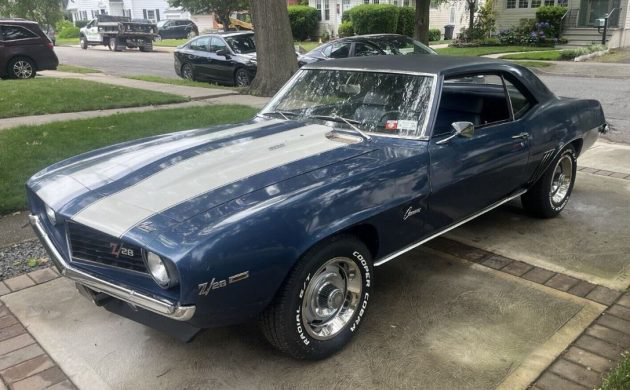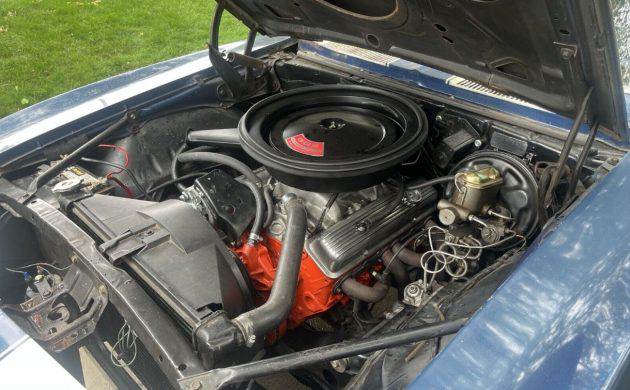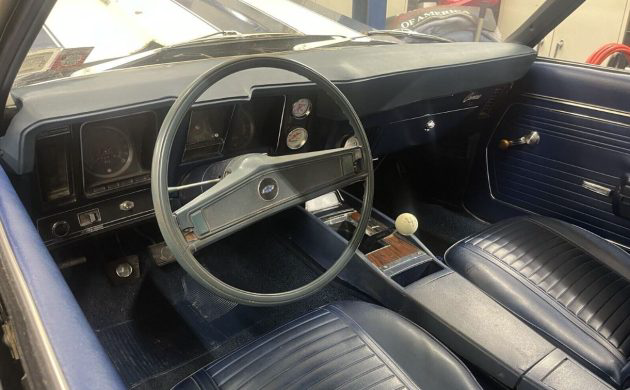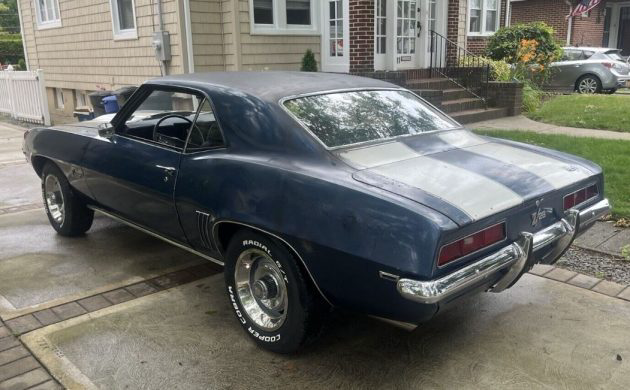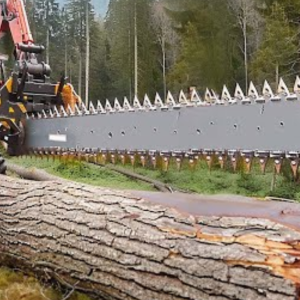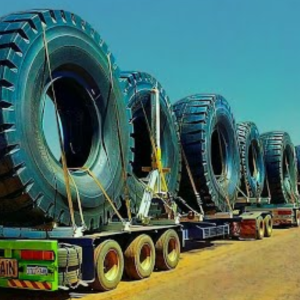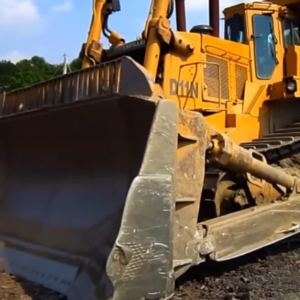Disclosure: This site may receive compensation from some link clicks and purchases.
If you’re the sort of person who struggles to make decisions, this 1969 Chevrolet Camaro Z28 could be an interesting proposition. Its faded and tired paint suggests it would be a worthwhile restoration project, while its lack of rust and numbers-matching drivetrain make preservation a viable option. Regardless of which path the buyer selects, this classic will remain inherently desirable. The best news is that they don’t need to rush their decision, because it is a turnkey classic that can be enjoyed immediately. Why not take a close look to see if you can decide what path you would take?
The seller has been this Camaro’s custodian for two years, using the car mainly for shows. They confirm it spent years in a pole barn, but it hasn’t suffered greatly from that experience. The Twilight Blue paint has undoubtedly seen better days and has accumulated a fair selection of marks and imperfections. However, the seller claims that most of it is original, which some enthusiasts might view as justification for preservation. Further justification is provided when we examine the underside shots because the floors are as solid as the day the car rolled off the line. All the seller did was dry-ice blast everything to ensure it was spotlessly clean. They replaced the body bushings and rebuilt the sub-frame, but there has been no cutting or welding in this revival. The exterior is clean, and the trim is acceptable for a driver-grade car. The windshield features a small etching in one corner, but the remaining glass is excellent.
Chevrolet produced the Z28 as a homologation model for the competitive Trans Am Series, developing the car for the Under 5-Liter class. The engine bay houses a 302ci V8 that just sneaks below the mark. The company quoted power and torque figures of 290hp and 290 ft/lbs, but those figures are believed to be grossly understated. All cars came with a four-speed manual transmission, while this Z28 features a 4.10 Posi rear end. The ¼-mile ET for these cars was largely irrelevant because that didn’t form part of the design brief. Chevrolet developed the Z28 for the race track, where drivers could keep that sweet V8 singing to maximize performance. The seller states that the major drivetrain components are numbers-matching, although the original carburetor, distributor, and exhaust manifolds are AWOL. They recently replaced the entire braking system, confirming that the Camaro runs and drives well. It appears the new owner won’t need to spend a dime beyond the purchase price of a car that comes with its original Window Sticker to verify its authenticity.
This Camaro’s interior is a mixed bag because while the seats are original, many trim pieces have been replaced due to age and deterioration. Readers will note the additional gauges, but shouldn’t fear that anything was cut during installation. The top ones occupy the spot typically reserved for the heater controls, while the lower one is mounted in the ashtray slot. The seller holds the original components, making reversing those changes a walk in the park. The console-mounted sports gauges are inoperative, as is the clock. There are a couple of minor trim shortcomings, but its condition is acceptable for a driver-grade classic.
 The Z28 was one of Chevrolet’s hidden secrets when it launched the badge in 1967. Only 602 buyers ordered one before the public got wind of what it offered. That figure rose to 20,302 in 1969, and the badge would become an almost constant staple of the model range until production ended. The seller listed this 1969 Z28 here on eBay in Floral Park, New York. Twenty-one bids have pushed the price to $56,100, which is below the reserve. The listing’s bidding and viewing history suggest it has struck a chord with enthusiasts, and I won’t be surprised if the price climbs significantly higher before the hammer falls. Are you tempted to join the action, or will you join me as a fascinated spectator?
The Z28 was one of Chevrolet’s hidden secrets when it launched the badge in 1967. Only 602 buyers ordered one before the public got wind of what it offered. That figure rose to 20,302 in 1969, and the badge would become an almost constant staple of the model range until production ended. The seller listed this 1969 Z28 here on eBay in Floral Park, New York. Twenty-one bids have pushed the price to $56,100, which is below the reserve. The listing’s bidding and viewing history suggest it has struck a chord with enthusiasts, and I won’t be surprised if the price climbs significantly higher before the hammer falls. Are you tempted to join the action, or will you join me as a fascinated spectator?
